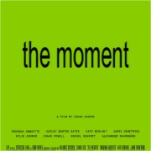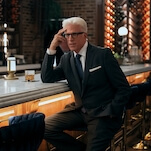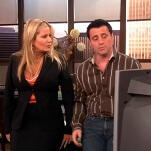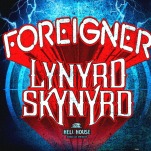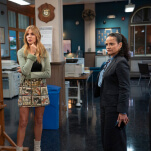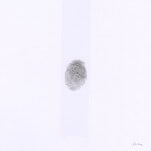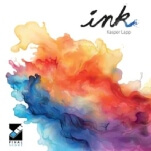In his 2000 book Bowling Alone: The Collapse And Revival Of American Community, political scientist Robert D. Putnam used the decline of bowling leagues as an example of how American civic society was falling apart. He argued that the Internet and television were keeping people in their own worlds, reducing their participation in everything from social groups to local and national politics. Putnam might be happy to know that there are still plenty of people making friends while having some drinks and rolling balls down a lane. It’s just that the balls and lanes have changed.
The first national Skee-Ball league was founded in 2005 in Brooklyn. Brewskee-Ball, which is currently in a legal battle over trademark infringement with the game’s manufacturers, enlisted players across the country to buy machines, set them up in local bars, and get people playing competitively. One of those recruits was Mike Fraser, who started Chicago’s The Skee League in 2011.
Fraser is prone to squeeze the word “Skee” into just about any context. His business cards bill him as the league’s “SKEE-E.O.,” and he calls new players “rook-skees.” “My mind is warped with Skee-Ball,” he told me. “I’m like, ‘When’s the Bears skee-son start?’ because I can’t function properly.”
But that enthusiasm works, and Fraser’s group has thrived. Leagues run three times a week in summer, fall, and winter (or as Fraser calls it, “three skee-sons”) with 10 teams of three playing each night. With dedicated members signing up in advance and shutting out new players, Fraser kicked off a league at a second bar, where he’s already filled slots for two nights a week. He’s gotten sponsorships from Tullamore Dew and Goose Island Brewery, and he plans to add a third location soon, with long-term hopes of establishing leagues throughout the city.
“There’s a huge surge in nostalgia for these classic games we were all fans of as kids,” Fraser said. “Now we can play them in bars and reconnect with the fun.”
Each player and team’s scores are tracked, with the “high rollers” getting admission into a bracket-style tournament and team championships. Fraser also likes to spice up the game by adding challenges—he might make players roll balls left-handed, or wear a blindfold, or shackle themselves in handcuffs. Success is rewarded with a drink. Fraser dedicated an entire event to these quirky versions—a Skeelympics where he taped cups on the lanes like a slalom course and challenged players to Skee-Ball-themed games of beer pong and bags.
On a recent Wednesday, the group was gathered at Windy City Inn, a low-key, vaguely Irish bar in Chicago’s North Center neighborhood. Fraser had a Skee-Ball table installed in a corner, across from a bowling video game, promising the owner that he’d bring in a crowd during typically low-traffic nights. The Skee League delivered, with a young group, more than half of them women, downing beers and cocktails between their turns. High scores or sinking a ball into the coveted 100-point slot earned cheers and high-fives from fellow players.
Jen Popp was playing scorekeeper during her first night in the league, a position she got because she “was probably the most excited,” she said. She joined with a few friends, inspired by fond childhood memories of playing the game at her local arcade. “Skee-Ball was always my favorite,” Popp said. “I didn’t really like the combat video games. It’s a little more interactive than just pressing buttons.”
Nostalgia also drew in Suzanne Moody, who joined last year and has already played three seasons. “We were just sitting around and said, ‘You know what we want to do? We want to play Skee-Ball,’” she said. “We looked around online for bars that had Skee-Ball, found the league, and thought, ‘This is even better.’”
Bob Eriksen joined the league at its first event. He happened to be at the bar watching a Mizzou football game when he heard an announcement about the tournament and decided to compete with his friends. “We kept winning,” he said. “We were good.” When I asked him what makes him such a skilled Skee-Ball player, he said, “‘What makes people so bad?’ is the question. It’s pretty simple. You put it in the hole.”
Indeed, Moody said the ease of play also helped fuel her interest in a Skee-Ball league. “It’s not like a volleyball league, where you have to play sports.” She claims the secret to Skee-Ball success is not overthinking it. “If you just do it, you’re fine. We find the more we actually try, the worse we get. There are some people who can hit 100s all the time and 50s, but I’m not one of them. You get kind of competitive and competitive against yourself trying to get better.”
Fraser gives out bracelets to players who score perfect games, and his elite rollers like to wear their entire collection at once to show off. The Chicago league works with groups in Milwaukee and Boston and periodically travels to their tournaments to compete. “I think we’ve got the best rollers in the country, and we can prove it,” Fraser said.
During league nights, Fraser sets up a table where he logs scores and sells T-shirts. But when I visited, he stepped up to a Skee-Ball lane with me and insisted I give it a go. He complimented my form, a side-facing, arm-extended pose I perfected during my ticket-seeking youth. I felt pretty good about myself when I saw that my score of 190 had beaten the last league player to roll before me.
It would have been easy to believe Eriksen and Moody’s insistence that there’s really nothing to the game. Then Fraser stepped up and used a bank shot to sink one high-scoring ball after another, more than doubling my own tally. Like bowling, the rules and mechanics of Skee-Ball are straightforward, but nothing beats the skill that comes from countless evenings spent on the lanes.























